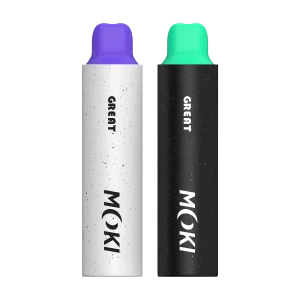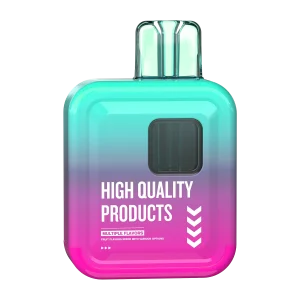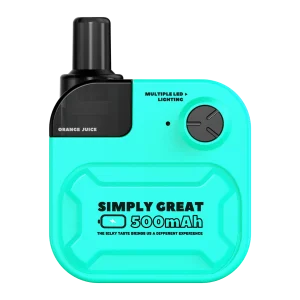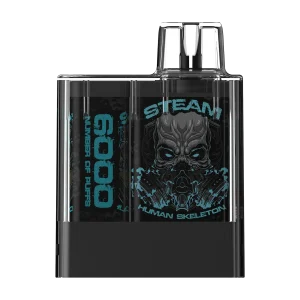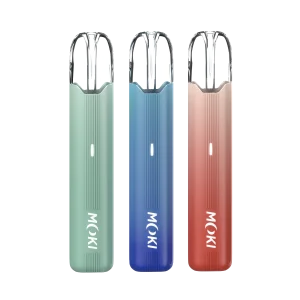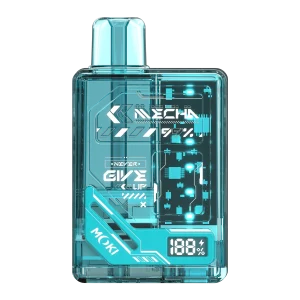Vaping, as a modern technological alternative to traditional smoking, have a history filled with innovation and transformation. From the initial concept to the diverse range of products available today, the progress in vaping technology has not only changed the lifestyles of millions of smokers but also sparked widespread discussions around the globe concerning public health, regulatory policies, and technological innovation.
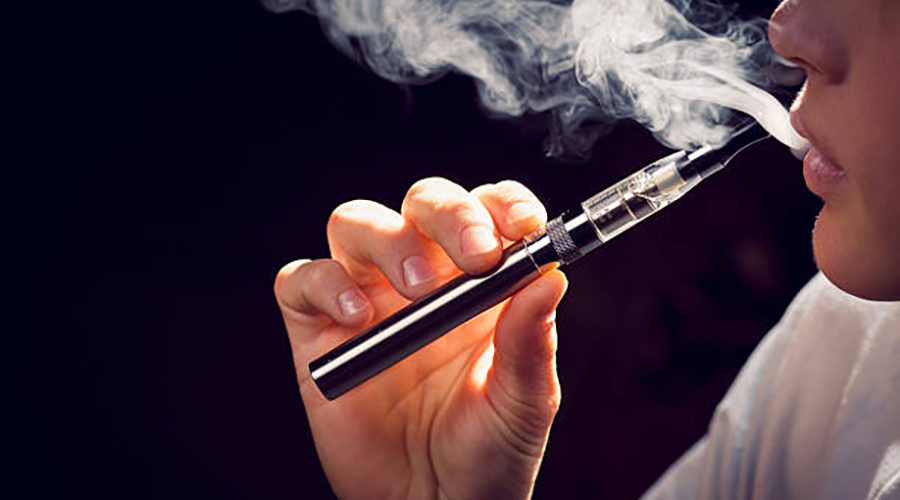
The birth of the vaping device dates back to 2003 when Chinese pharmacist Hon Lik invented the world’s first e-cigarette and later established his own brand “Ruyan” in 2004. The invention was initially intended to help his father quit smoking and, despite the brand fading from the market for various reasons, its inception undoubtedly marked a significant milestone in the history of vaping development.
Since then, vaping technology has evolved from simple to complex, from rough to refined, with each technological leap bringing users better experiences and more choices. Over time, vaping technology has continuously evolved, from the initial disposable devices to rechargeable, reusable advanced devices, and now to smart adjustable devices, with each technological innovation propelling the industry forward.
These technological advancements have not only improved the functionality and convenience of vaping but also led to a qualitative leap in design, safety, and user experience.
1. Early Vapes: A Giant Leap from Simplicity
The first vapes resembled traditional cigarettes in appearance, typically a slender plastic or metal tube with a mouthpiece structure at one end for users to inhale and batteries at the other end.
Vaping system mainly consist of batteries, atomizers, and e-liquid. Early batteries often used common small lithium batteries with limited capacity and weak endurance, requiring frequent charging and relatively low charging efficiency, which affected the continuous use experience of users.
The atomizer, a key component of vapes, had a simple design in the early days. Made of ordinary metal, they were not very durable, and the vaporization effect was not fine, producing less smoke with a more noticeable particulate feel, failing to meet users’ demands for smoke density and delicacy.
As for e-liquid, the early composition was relatively basic. Mainly using propylene glycol and plant glycerin as solvents, with a certain amount of nicotine added to simulate the stimulation of traditional cigarettes, the flavor choices were quite limited, mostly simple tobacco-like tastes, lacking in richness and depth of taste, and failing to cater to the diverse flavor preferences of different users.
2. Smart Vaping Device: A New Trend
During the rapid development phase of vaping technology, the emergence of smart vapings was undoubtedly a significant breakthrough. It went beyond simple smoke production functions and integrated many smart elements. With built-in smart chips and related sensors, it can achieve adjustable power functions, allowing users to set output power according to their preferences for varying amounts of smoke and taste experiences.
Temperature control has also become a highlight, with chips monitoring and precisely controlling the temperature of the atomizer in real-time, ensuring that e-liquid is vaporized at the right temperature, enhancing the vaporization effect and making the smoke more delicate and full, while effectively avoiding issues like dry burns due to high temperatures, greatly extending the lifespan of the atomizer. This marks a new step towards a more intelligent and humanized vaping technology.
3. The Evolution of Atomization Core Technology from “10 to 100”
China’s vaping industry, which has a core supply chain and a dominant position globally, has completed the journey from “zero to one,” with atomization core technology playing a decisive role.
Whether it’s disposable vaporizers, pod-style vaporizers, or traditional large vapor devices, the core function is to heat and vaporize e-liquid through the atomization core for inhalation. The overall structure design of the atomization core also needs to ensure safety, stability, and efficiency. From a technological development perspective, the atomization core has mainly evolved from the initial use of glass fiber rope atomization cores to cotton atomization cores, then to columnar ceramic cores, and finally to bowl-shaped ceramic cores. These evolutions have not only improved vaporization efficiency and taste but also enhanced product stability and safety.
Since 2016, many global markets have rapidly accepted electronic vaporization products, a phenomenon closely related to the widespread application of ceramic atomization core technology. This technology has not only led the development trend of the global electronic vaporization industry, accelerating the transition from the era of large vapor devices to small vapor devices, but also helped Chinese electronic vaporization products step onto the world stage.
Compared to the early cotton core technology, ceramic core technology has solved the problems of high porosity and excessive e-liquid permeability of cotton cores. It also shows superior performance in leak prevention, dry burn prevention, vaporization stability, and compact size. Compared to traditional metal atomization cores, ceramic atomization cores have a uniform microporous structure that allows e-liquid to be more fully and evenly adsorbed and conducted, achieving a more efficient and delicate vaporization effect, producing denser and softer smoke, greatly enhancing the user’s smoking experience.
Moreover, small vapor products with ceramic atomization cores have opened up a large number of new electronic vaporization markets with their distinctive features and advantages, promoting the continuous growth of the global vaping retail scale.
4. Ceramic Atomization Core Technology Effectively Solves Core Clogging Issues

Since the launch of ceramic heating element technology research by Smoore in 2014, this technology has undergone significant development. In 2015, Smoore began developing the first generation of ceramic atomization cores, and by 2016, the first batch of ceramic heating technology products officially hit the market. In the same year, Smoore launched the second generation of ceramic atomization solutions, which used unique porous black ceramics combined with metal coating, not only improving high-temperature resistance, effectively solving core clogging issues, but also accelerating oil conduction speed, avoiding dry burn phenomena caused by long-term use, while ensuring the delicacy and stability of taste.
This technological advancement has not only promoted the development of the electronic vaporization industry but also marked a rapid transition of electronic vaporization products from the era of large vapor devices to small vapor devices, further consolidating China’s leading position in the global electronic vaporization technology field. Under the influence of Smoore, the global electronic vaporization market began to shift from cotton cores to ceramic cores, bringing a new investment opportunity.
5. Technological Innovations Brought by Major Manufacturers
5.1 The development of new ceramic core technology and ultra-thin electronic vaporization technology
On April 27, 2022, the world’s first ceramic core disposable vaporization solution “FEELM MAX” was released, a new generation of long-life ceramic cores developed over two years. This ceramic core can improve the utilization rate of vaporization liquid, reduce waste, enhance the smoothness of taste by more than 30%, and won the German Red Dot Award, known as the “Oscar” of the global industrial design industry, for its green and environmentally friendly design concept.
MOKI released the ceramic core heating vaporization technology solution MiiMU, which combines the advantages of ordinary ceramic cores and mesh cores, mainly characterized by high-energy vaporization, consistent taste, good compatibility, and more mouthfuls. The embedded heating film application can withstand high temperatures up to 600°C, and the integrated sintering process ensures that the chip’s quality standard reaches 99%, with rapid vaporization in 0.25 seconds and full stable vaporization in 0.5 seconds.
5.2 Heyuan Alkaid Light Heating Technology Wins “Best HNB Innovation Award”
Despite the dominance of giants, innovation never stops. At the 2024 German Dortmund International Tobacco Exhibition, Heyuan’s Alkaid light heating technology won the “Best HNB Innovation Award.” Its “convenience and durability” are two of the core advantages of Alkaid technology.
This technology uses full-spectrum light waves similar to sunlight for rapid and uniform heating. Traditional HNB devices usually require 10 to 30 seconds of preheating time, while Alkaid technology can complete preheating and produce smoke in just 5 seconds, freeing users from long waiting times. Compared to traditional heating technologies, it can increase the release efficiency of nicotine in aerosols by more than 40%, increase smoke volume by 20%, and reduce the release of harmful substances by 20%. Due to the non-contact heating design, it reduces the accumulation of tobacco residue and tar, making the device less frequent to clean, and the experience remains stable even after 5,000 consecutive uses.
6. The Refinement of E-Liquid Technology
In the early days, e-liquid compositions were relatively simple, but now, research into ingredients has been continuously deepening. On one hand, the application of nicotine salts has become a significant breakthrough. Compared to traditional freebase nicotine, nicotine salts deliver nicotine more gently, providing a similar sense of satisfaction but reducing the throat irritation, making the vaping experience more comfortable. The industry is also moving towards a healthier direction through more precise ingredient ratios, more scientific processing techniques, and deeper safety research.
In terms of flavor development, it has evolved from initially mimicking only tobacco flavors to now encompassing a wide variety of flavors including fruits, desserts, and beverages, meeting the personalized taste needs of different user groups.
At the same time, there has been significant progress in the safety and stability of e-liquids. Through stricter ingredient selection and optimization of ratios, it ensures that e-liquids are less likely to spoil or produce harmful substances during storage and use, further enhancing the overall quality of vaping e-liquids. This refined development of e-liquid technology has laid a solid foundation for the upgrade of vaping products and the optimization of user experience.
7. Challenges in the Development of Vaping Technology
While the development of vaping technology has made significant progress, it also faces a series of technical challenges and issues. First, the uncertainty of regulatory policies poses a challenge to the vaping industry. There are significant differences in vape regulatory policies across different countries and regions, which limits the global unified development of vaping technology. Second, the market is highly competitive with numerous brands entering the market, leading to severe product homogenization and intense price competition. Companies need to continuously invest in research and development and marketing to highlight the advantages and characteristics of their products.
Although vaping technology has gone through many stages of development, the future still holds infinite possibilities. With the continuous advancement of technology and the increasing demands for health and experience, it is believed that vaping technology will achieve more breakthroughs in areas such as safety, personalized customization, and intelligent applications. It will gradually move towards a more mature, standardized, and demand-fulfilling new stage, providing consumers with higher quality, healthier, and more distinctive products.

